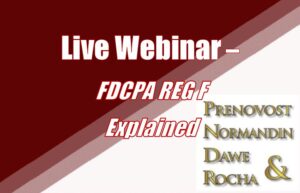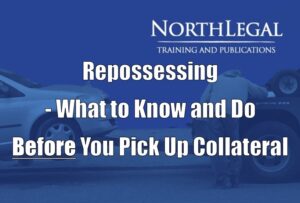Guest Editorial
Manassas, VA – 31 July 2013 – Growing up I can remember my dad spending his nights after work and weekends on our gravel driveway with his feet poking out from underneath his black 1965 Ford Mustang with cherry red interior. I would hold the old grease covered light for him and try to be more helpful than in the way…I’m not sure I always succeeded. What’s the point behind this trip down memory lane you may ask? Well for many, many years just like I’m sure many of you have done, my dad did his own repairs. They may not have gotten done as quickly as they could have been done in the shop, but with my dad doing the work, the cost was parts…not labor (and parts were a lot cheaper back then). Fast forward to vehicles manufactured in the 90s and 2000s and now much of the work can’t be done in your driveway or garage because many things are computerized and much more complicated and technical in nature; resulting in higher costs in both the parts and labor departments. Just think of the difference in price between a regular key and a transponder key and you’ll get my drift.
My dad purchased his 1965 Mustang in the early 1970’s off the back lot of a used car dealership where the car had grass and weeds growing around it. For this beautiful piece of American automotive ingenuity, he paid a whopping $500.00 out of an act of pure desperation as he puts it. I mention this only because you can see how much vehicle prices (even used vehicles) have risen over the years. And with vehicles costing more today, it costs more to repair or adjust the claim in the event of stolen vehicle or total loss.
So long story short, vehicle costs and costs to repair – help to drive the cost of insurance – Driving Factor #1! (Please note these are discussed in no particular order.)
Driving factor #2… Rising Medical Costs.
I recently saw an email that said “The year was 1955….No one can afford to be sick anymore. At $15.00 a day in the hospital, it’s too rich for my
blood.” You can barely purchase many OTC medications for $15.00 anymore much less pay for an injured party’s medical expenses and mental anguish with future therapy. The rising medical costs including emergency services transportation, soft tissue injuries, mental health services, expensive and sometimes unnecessary medical tests, etc. all help to drive the cost of insurance.
Driving Factor #3….Litigation.
 Everyone’s first instinct now is to sue and why not? Attorneys in certain areas are putting up billboards saying “If your car has been repossessed I can get you money!” And who can watch late night or network TV without seeing advertisements for personal injury lawyers? These advertisements are estimated to have costs the offending firms and their affiliates over $200 Million dollars in 2011 alone. And these firms are not interested in judgments, they are interested in settlements.
Everyone’s first instinct now is to sue and why not? Attorneys in certain areas are putting up billboards saying “If your car has been repossessed I can get you money!” And who can watch late night or network TV without seeing advertisements for personal injury lawyers? These advertisements are estimated to have costs the offending firms and their affiliates over $200 Million dollars in 2011 alone. And these firms are not interested in judgments, they are interested in settlements.
Now from an insurance standpoint, a carrier just can’t win. As an insured, you don’t want a claim paid if you don’t think you did anything wrong. Yet at the same time you don’t want a claim denied if it could cost you your client…or forwarder. And yes, sometimes the carrier is going to settle a claim if they feel it is going to cost more to defend you than to settle (or if you can’t really prove it wasn’t your fault or you didn’t do what the claimant said you did). But regardless if money is paid out as a paid loss or as defense costs, these are still ultimately costs to the insurance company and help to drive the cost of insurance.
Driving Factor #4…Catastrophes.
|
Billions |
Name |
Year |
| $125.0 | Hurricane Katrina | 2005 |
| $68.0 | Hurricane Sandy | 2012 |
| $37.5 | Hurricane Ike | 2008 |
| $29.2 | Hurricane Wilma | 2005 |
| $26.5 | Hurricane Andrew | 1992 |
| $23.0 | Hurricane Ivan | 2004 |
| $16.6 | Hurricane Irene | 2011 |
| $16.0 | Hurricane Charley | 2004 |
| $12.0 | Hurricane Rita | 2005 |
| $10.2 | Hurricane Gilbert | 1988 |
This is a list of the top 10 costliest Atlantic Hurricanes, these figures are Billions, not Millions – and insurance companies are expected to and have paid the bulk of these costs. (It’s worth noting that 8 of the top 10 costliest storms have been since the year 2000. So carriers are being hit hard and frequently with catastrophic losses.) While re-insurance is available to most carriers, as those reinsurers are tapped to pay for these huge losses, the cost of reinsurance goes up and carriers have to pay those increased costs. Paying for these catastrophic losses, drives the cost of insurance.
Driving Factor #5…The Economy, Investments and The Government
A struggling economy affects most every businesses’ ability to make a profit. And when a business can’t make a profit or money off of its investments (if they are lucky enough to have money to invest), the general trend is to increase price. Why this same theory cannot take hold in the repossession industry is a mystery to us all! But when the government makes decisions that aren’t good for business and/or the economy struggles, prices go up – another factor that drives the cost of insurance.
Driving Factor #6…Value Added Services
It is common place on personal auto policies these days to see additional charges for essentially unreleated coverages or additional services. For example, my personal auto policy provides Roadside Assistance for an extra $10, if I had a pet I could get pet coverage, and identify theft monitoring and protection. Each of these are considered value added services…but each does ultimately come with a cost. Membership in RSIG goes beyond insurance and yes, there are costs associated with those benefits. RSIG assists members in researching laws and case law, we compile and make available to members compliance documents and training, forms needed by the industry, assistance in meeting ongoing lender and client demands, access to National Agency Management Systems that includes access to key codes, VIN to Plate conversion, LPR data, access to the certification course that provides training on UCC, FDPCA, the directory, and other member benefits and industry discounts.
Driving Factor #7 (and I’ll stop here, because I’m guessing you’re getting my point)…. You!
That’s right, the decisions you make help drive the cost of insurance. If you properly maintain your vehicles, statistically speaking they are less likely to be involved in an accident. If you make smart choices about your drivers and check MVRs before hiring and regularly thereafter, you typically don’t have as many claims (especially driving related losses). If you invest in education and training for your employees, they learn about their industry and the laws and your policies and procedures – reducing losses.
So as you can see there are many factors that drive the cost of insurance. These same factors can influence costs either way, but volatility is never a good long term market condition. Insurance providers, like RSIG and our carrier who understand your industry can properly price a policy so the pricing can remain stable and they can stay in the market. RSIG has not passed on an increase to its membership in over 10 years. Those providers who quote prices that are extremely low or come as a shock when you see them are probably too good to be true. You don’t want to find out on claim day that you don’t have the coverage you thought you did. And you don’t want to find yourself uninsurable because your carrier didn’t understand your industry, didn’t know you do what you do or priced your policy so low that a single claim puts you upside down in your policy.
With unmatched expertise and experience, Recovery Specialist Insurance Group (www.rsig.com) offers superior insurance protection, education & training and repossession assignment management technology designed for today’s lender and repossession professional. Have questions, we’re ready to help and can be reached at 703.365.0199.
From the desk of: Dana Loan, Recovery Specialist Insurance Group













Facebook Comments